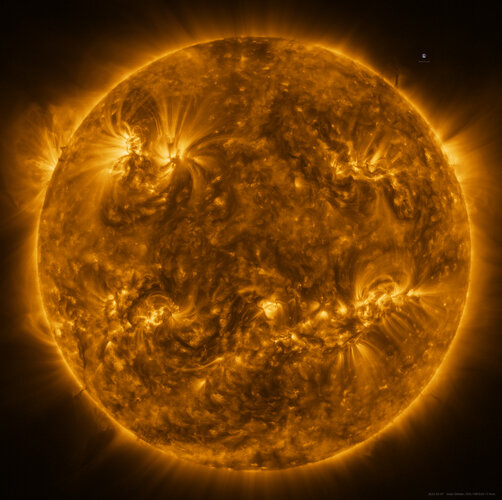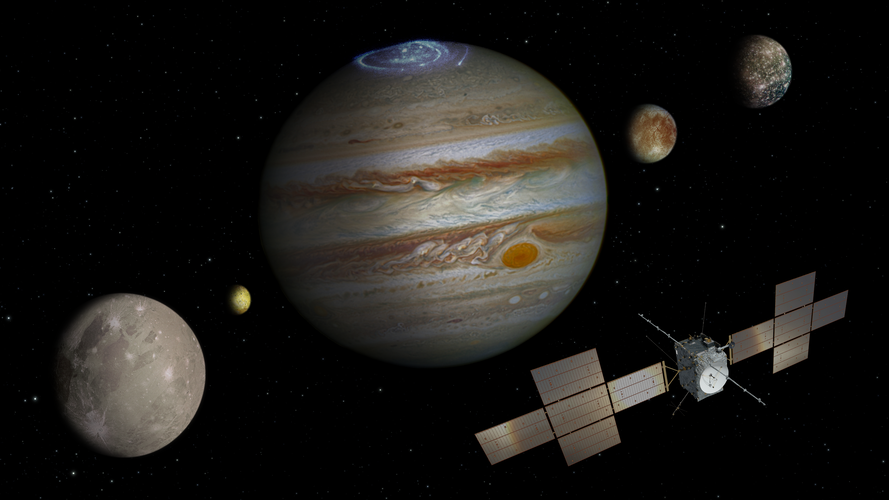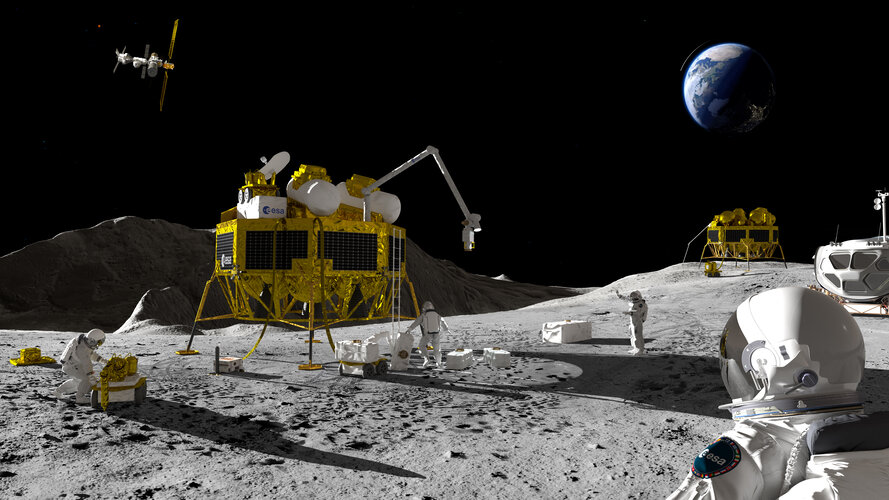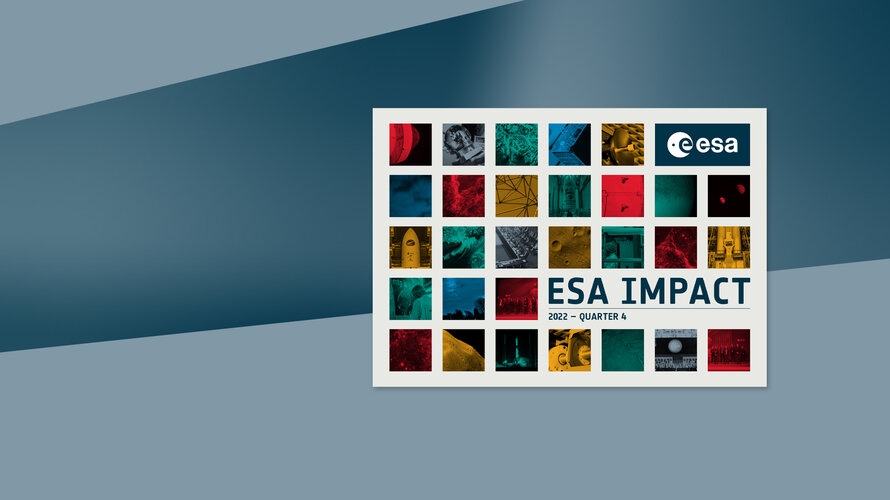
Copernical Team
Year in images 2022

Year in images 2022
Our year through the lens: a selection of our favourite images for 2022
Opportunities for media: ESA’s Jupiter Icy Moons Explorer

Musk says will step down as Twitter CEO once successor found
 Elon Musk said Tuesday he would resign as chief executive of Twitter once he finds a replacement, in apparent response to a poll he launched that suggested users wanted him to step down.
Musk has fully owned Twitter since October 27 and has repeatedly courted controversy as CEO, sacking half of its staff, readmitting far-right figures to the platform, suspending journalists and trying to cha
Elon Musk said Tuesday he would resign as chief executive of Twitter once he finds a replacement, in apparent response to a poll he launched that suggested users wanted him to step down.
Musk has fully owned Twitter since October 27 and has repeatedly courted controversy as CEO, sacking half of its staff, readmitting far-right figures to the platform, suspending journalists and trying to cha Russian space chief praises US after ISS coolant leak
 The head of Russian space agency Roscosmos on Tuesday praised Russia-US cooperation at the International Space Station following a major coolant leak from a Soyuz crew capsule.
"Say hello to the entire American team. They proved themselves to be very worthy in this situation and lent us a helping hand," Borisov said, speaking to the Russian crew on board the ISS. "But I hope we will manage o
The head of Russian space agency Roscosmos on Tuesday praised Russia-US cooperation at the International Space Station following a major coolant leak from a Soyuz crew capsule.
"Say hello to the entire American team. They proved themselves to be very worthy in this situation and lent us a helping hand," Borisov said, speaking to the Russian crew on board the ISS. "But I hope we will manage o NASA's InSight Mars lander may have sent its last image to Earth
 The InSight Mars lander has sent what could be its final image to Earth as NASA expects the probe to stop transmitting.
"My power's really low, so this may be the last image I can send. Don't worry about me though: my time here has been both productive and serene. If I can keep talking to my mission team, I will - but I'll be signing off here soon. Thanks for staying with me," the InSi
The InSight Mars lander has sent what could be its final image to Earth as NASA expects the probe to stop transmitting.
"My power's really low, so this may be the last image I can send. Don't worry about me though: my time here has been both productive and serene. If I can keep talking to my mission team, I will - but I'll be signing off here soon. Thanks for staying with me," the InSi Vega-C rocket lost shortly after lift-off in French Guiana
 The European light launcher rocket Vega-C was lost shortly after lift-off from French Guiana on Tuesday with two Airbus satellites on board, the company behind the launch said.
The rocket had been trying to bring into orbit two Earth observation satellites built by Airbus, intended to join an existing network that captures high-quality images of any point on the globe several times a day.
The European light launcher rocket Vega-C was lost shortly after lift-off from French Guiana on Tuesday with two Airbus satellites on board, the company behind the launch said.
The rocket had been trying to bring into orbit two Earth observation satellites built by Airbus, intended to join an existing network that captures high-quality images of any point on the globe several times a day. Future of space engineering is model-based

A hackathon challenged aerospace students to develop a detailed digital system model for a robotic assistant for astronauts on the Moon, able to identify key areas of interest in advance of any humans landing, guide them to their habitat and even rescue any moonwalkers in distress.
The winning team, from France’s Institut Supérieur de l'Aéronautique et de l'Espace, completed their task within just two weeks, using Model Based System Engineering to do so. This method involves creating digital models of space missions to manage their design, construction, test and operation – and has been highlighted by ESA Director General Josef
L3Harris To Acquire Aerojet Rocketdyne
 L3Harris Technologies (NYSE: LHX) and Aerojet Rocketdyne Holdings, Inc. (NYSE: AJRD) together announced the signing of a definitive agreement for L3Harris to acquire Aerojet Rocketdyne for $58 per share, in an all-cash transaction valued at $4.7 billion, inclusive of net debt.
This marks L3Harris' second acquisition announcement of 2022, demonstrating its continued focus on delivering crit
L3Harris Technologies (NYSE: LHX) and Aerojet Rocketdyne Holdings, Inc. (NYSE: AJRD) together announced the signing of a definitive agreement for L3Harris to acquire Aerojet Rocketdyne for $58 per share, in an all-cash transaction valued at $4.7 billion, inclusive of net debt.
This marks L3Harris' second acquisition announcement of 2022, demonstrating its continued focus on delivering crit Enjoy ESA’s Impact over the last quarter!

Enjoy ESA’s Impact over the last quarter!
Welcome to this edition of ESA Impact, an interactive publication covering stories and images from the fourth quarter of 2022.
Viasat's Ka-band in-flight connectivity system achieves STC on Gulfstream G450 aircraft
 Viasat Inc. (Nasdaq: VSAT) report that the Federal Aviation Administration (FAA) approved the company's Ka-band In-flight Connectivity (IFC) solution for Gulfstream G450 aircraft, a large cabin jet often deployed on long-distance, international expeditions.
With this supplemental type certificate (STC) awarded by the FAA, Viasat's Ka-band connectivity system is now available on more than t
Viasat Inc. (Nasdaq: VSAT) report that the Federal Aviation Administration (FAA) approved the company's Ka-band In-flight Connectivity (IFC) solution for Gulfstream G450 aircraft, a large cabin jet often deployed on long-distance, international expeditions.
With this supplemental type certificate (STC) awarded by the FAA, Viasat's Ka-band connectivity system is now available on more than t 
